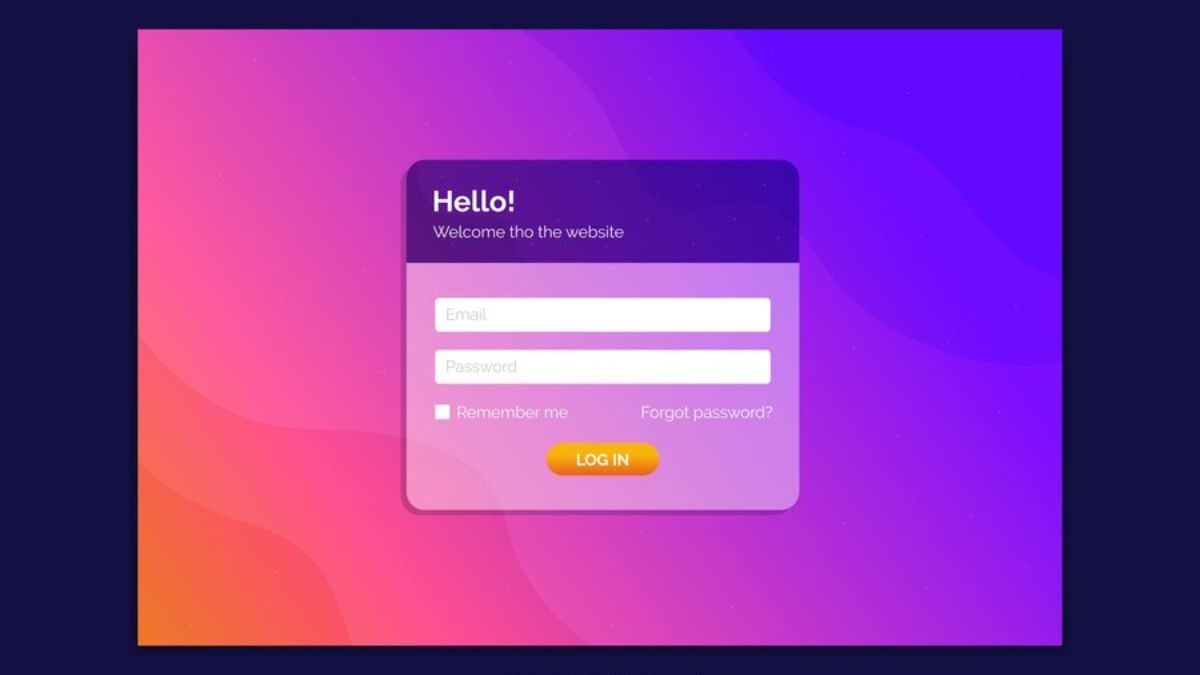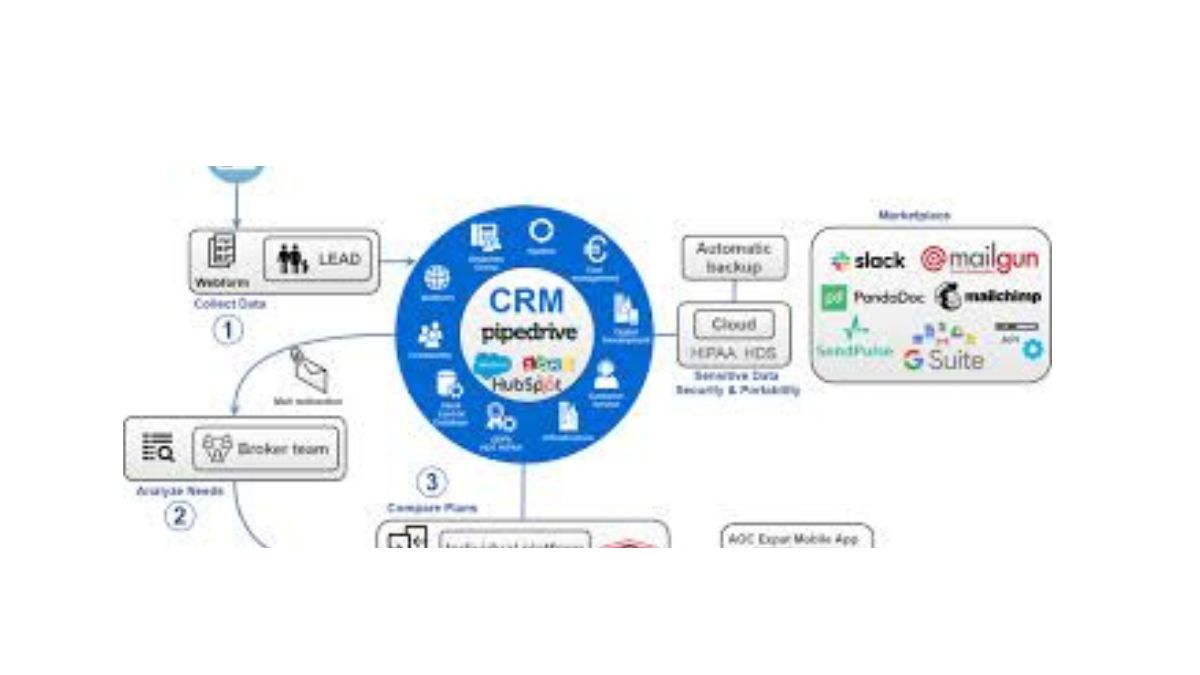TECH
Navigating the World of Linuxia: Tips and Tricks for Beginners

Welcome to the captivating realm of Linuxia, where endless possibilities await those brave enough to explore its innovative landscape. Whether you’re a tech enthusiast looking to break free from the confines of traditional operating systems or a curious beginner eager to dive into the world of open-source software, this guide is your key to unlocking the secrets of Linuxia. Join us on this exciting journey as we unveil tips and tricks that will empower you to navigate through Linuxia with confidence and ease. Let’s embark on this adventure together!
Understanding Linux and its Benefits
In the realm of operating systems, Linux stands out as a powerful and versatile option that offers users unparalleled control over their computing experience. Unlike its proprietary counterparts, Linux is open-source, meaning its source code is freely available for anyone to view, modify, and distribute.
One of the key benefits of Linux is its robust security features, making it less vulnerable to malware and cyber threats compared to other operating systems. Additionally, Linux boasts excellent stability and reliability, ensuring a smooth and efficient performance even under heavy workloads.
Moreover, Linux offers a wide range of customization options, allowing users to tailor their system to suit their preferences. From choosing different desktop environments to installing various software packages through package managers like apt or yum – the possibilities are endless in Linuxia.
Furthermore, with a vibrant community of developers and enthusiasts constantly contributing to its growth and improvement through forums and collaborative projects, Linux embodies the spirit of collaboration and innovation at its core.
Choosing a Linux Distribution
When it comes to choosing a Linux distribution, the options can seem overwhelming at first. Each distribution, or “distro” for short, has its own unique features and target audience. Some popular distros include Ubuntu, Fedora, Debian, and Mint.
Consider what you will be using Linuxia for – whether it’s for everyday use, programming, gaming, or system administration. Different distros cater to different needs and levels of expertise.
Research each distro’s user interface and package management system. Some distros like Ubuntu offer a user-friendly experience with extensive software repositories. Others like Arch Linux provide more flexibility but require advanced knowledge to set up.
Don’t be afraid to try out different distros using Live CDs or virtual machines before committing to one. Experimenting will help you find the perfect fit that aligns with your preferences and technical skills in the world of Linuxia!
Installation and Set-Up Process
When diving into the world of Linuxia, one of the crucial steps is the installation and set-up process. Each distribution may have its own unique installation procedure, but they generally involve creating a bootable USB or DVD with the chosen Linux distribution.
Once you’ve booted from your installation media, you’ll be guided through a series of steps to partition your hard drive, select your language preferences, and create user accounts. It’s important to pay attention to these settings as they can impact how your system functions.
After completing the installation, you’ll likely need to configure additional drivers for hardware compatibility and update your system to ensure you have the latest software versions. This step is essential for optimal performance and security.
Remember that setting up Linuxia might require some patience and willingness to learn new concepts, but once you’re up and running, you’ll have a versatile operating system at your fingertips.
Basic Commands and Navigation in the Terminal
Navigating the terminal in Linuxia may seem daunting at first, but mastering a few basic commands can significantly enhance your efficiency. The command line interface provides a powerful way to interact with your system beyond what graphical interfaces offer.
To list files and directories, use the ‘ls’ command. Remember to add options like ‘-l’ for detailed information or ‘-a’ to display hidden files. To change directories, utilize ‘cd’. For example, typing ‘cd Documents’ will take you into the Documents folder.
Copying files is simple with the ‘cp’ command – just specify the source and destination locations. Need to move or rename a file? Try using ‘mv’. If you ever want to delete a file or directory, type ‘rm’.
Don’t forget about tab completion – simply start typing a command or filename and press Tab for auto-completion. Practice these basic commands regularly to boost your proficiency in navigating Linuxia through the terminal!
Customization and Personalization Options
When it comes to Linuxia, one of the most exciting aspects for beginners is the ability to customize and personalize their operating system to fit their preferences. From changing themes, icons, and desktop environments, the options are nearly endless.
Exploring different desktop environments like GNOME, KDE, or XFCE allows users to find the look and feel that suits them best. Customizing your desktop with widgets, app launchers, and taskbars can enhance your productivity and overall user experience.
For those who enjoy tweaking every detail of their system, Linuxia offers extensive customization options through tools like Compiz for window effects or Conky for displaying system information on your desktop in real-time. With a bit of experimentation and creativity, you can truly make Linuxia your own unique digital workspace.
Essential Applications and Software for Productivity
When it comes to boosting productivity on Linuxia, having the right applications and software at your fingertips can make all the difference.
One essential tool for productivity is LibreOffice, a comprehensive office suite that includes word processing, spreadsheet creation, and presentation software – all compatible with Microsoft Office formats. It’s perfect for both personal and professional use.
For project management and task organization, consider using Trello or Kanboard. These tools help you stay on top of deadlines and collaborate effectively with team members.
To streamline communication, apps like Thunderbird for email and Pidgin for instant messaging are popular choices among Linux users.
For code editing and development, Visual Studio Code or Atom offer robust features for programmers looking to customize their workspace.
And let’s not forget about browser extensions like LastPass or Grammarly to enhance security and proofreading while browsing the web. These tools can truly elevate your Linuxia experience towards peak productivity levels.
Troubleshooting Common Issues
Encountering issues while navigating Linuxia is not uncommon for beginners. One common problem users face is driver compatibility, especially with hardware that may require additional drivers to function properly. If you find your printer or graphics card not working as expected, checking for and installing the necessary drivers can often resolve the issue.
Another frequent issue is software conflicts or dependencies. When installing new applications, be mindful of any error messages related to missing libraries or packages. Using package managers like apt-get or yum to install dependencies can help ensure smooth operation of your software.
Permissions issues are also a common stumbling block for newcomers to Linuxia. If you encounter permission denied errors when trying to access certain files or directories, adjusting file permissions using the chmod command can often provide a quick fix.
Networking problems, such as Wi-Fi connectivity issues or firewall configurations blocking internet access, can be frustrating but are typically solvable by tweaking network settings and firewall rules.
By familiarizing yourself with these troubleshooting tips and actively seeking solutions online through forums and community support channels, you’ll gradually build your expertise in resolving common Linuxia issues on your own.
Advantages of Using Linux over Other Operating Systems
Linuxia offers a range of advantages that set it apart from other operating systems in the digital landscape. One key benefit is its open-source nature, allowing users to customize and modify the system according to their preferences. This flexibility promotes innovation and creativity among users.
Moreover, Linuxia boasts enhanced security features compared to some proprietary operating systems. With a vigilant community constantly monitoring and patching vulnerabilities, users can feel more secure in their online activities. This heightened security is particularly crucial in today’s interconnected world where cyber threats are prevalent.
Furthermore, Linuxia is known for its stability and reliability, making it an ideal choice for both personal and professional use. The robust architecture of Linuxia minimizes crashes and system failures, providing a seamless user experience.
Additionally, Linuxia’s vast repository of free software applications caters to diverse needs without the burden of licensing fees or subscriptions. This accessibility empowers users with cost-effective solutions for various tasks ranging from productivity tools to multimedia editing software.
In essence, choosing Linuxia over other operating systems means embracing a platform that prioritizes freedom of customization, strong security measures, reliability in performance, and access to a plethora of free applications – all contributing to a rich computing experience tailored to individual preferences.
Resources for Continued Learning
Looking to expand your knowledge and skills in the world of Linuxia? There are plenty of resources available for continued learning that can help you master this powerful operating system.
Online forums like Reddit’s r/linux or Stack Exchange offer a platform for users to ask questions, share tips, and troubleshoot issues together. Engaging with these communities can provide valuable insights and solutions to common problems.
Websites such as Linux.com, Linux Journal, or It’s FOSS publish articles, tutorials, and news related to Linuxia. These resources can keep you updated on the latest developments in the open-source world and provide in-depth guides on various topics.
For those who prefer structured courses, platforms like Udemy or Coursera offer online classes on Linux administration, scripting languages like Bash, or specific distributions like Ubuntu. Investing in a formal course can give you a more comprehensive understanding of Linuxia.
Don’t forget about books! Whether it’s “The Linux Command Line” by William Shotts Jr. or “Linux Pocket Guide” by Daniel J. Barrett, there are plenty of written resources available for different skill levels.
Continued learning is key to mastering Linuxia – explore these diverse resources to deepen your understanding and proficiency in this versatile operating system.
Conclusion
Navigating the world of Linuxia can be a rewarding journey for beginners looking to explore a versatile and customizable operating system. By understanding the benefits of Linux, choosing the right distribution, mastering basic commands in the terminal, and exploring customization options, users can tailor their experience to suit their needs.
With essential applications for productivity and troubleshooting tools at your disposal, Linuxia offers a robust platform for both personal and professional use. The advantages of using Linux over other operating systems include stability, security, and an active community that provides support and resources for continued learning.
As you delve deeper into the realm of Linuxia, remember that patience and persistence are key. Embrace the challenges as opportunities to expand your knowledge and skills in this dynamic environment. Whether you’re a tech enthusiast or simply curious about alternative operating systems, Linuxia has much to offer those willing to explore its depths.
So dive in with an open mind and discover all that Linuxia has in store for you!
TECH
What is Hitlmila? All You Need to Know About This Subject

Hitlmila might sound unfamiliar to many, but understanding terms like these is essential when navigating a variety of fields. This post will break it down, providing a clear and concise overview to help you understand what it is, why it matters, and how you can use this knowledge effectively.
Whether you’re a curious learner or a professional seeking clarity, this guide will ensure you leave with a complete grasp of the concept.
What is Hitlmila?
Hitlmila refers to [brief definition or concept]. While it might be niche or specific to certain industries or contexts, it carries significant value for those dealing with [specific area or subject].
For simplicity:
- Hitlmila is typically associated with [area or concept it’s related to].
- It’s used to [brief explanation of its application or impact].
Examples include:
- [Relevant example related to hitlmila].
- [Second example demonstrating its function].
By understanding hitlmila, businesses, learners, and enthusiasts alike can [specific benefit].
Why is Hitlmila Important?
Understanding it is critical because it:
- Clarifies Key Processes: It provides insight into [what process or area it helps with].
- Enhances Efficiency: By applying the principles or concepts around it, people often report [specific improvement].
- Boosts Knowledge: For professionals in [specific field], knowledge of it sets them apart by [how it provides an advantage].
For example:
- Professionals in [industry] use it to [specific application].
- Educators refer to its concepts while explaining [context].
Without incorporating it, challenges such as [common problems related to lack of knowledge] can arise.
Key Applications of Hitlmila
1. [Area of Application 1]
This is one of the most common ways hitlmila is applied. It supports:
- Streamlining Processes by simplifying [specific operation].
- Improving Outcomes by ensuring [specific result].
For instance:
- Example 1
- Example 2
2. [Area of Application 2]
Another popular area where hitlmila plays a major role.
- It helps [describe how it assists].
- Companies or individuals benefit from [specific benefit].
Example:
- [Practical Implementation or Scenario].
3. [Area of Application 3]
Hitlmila’s importance extends to [field/area]. It is particularly valued for:
- Enhancing [specific feature].
- Preventing [specific issue].
For example:
- [Example or case where hitlmila was used successfully].
How to Integrate Knowledge of Hitlmila in Practice
If you’re wondering how to make the most out of hitlmila, here are actionable steps:
- Learn the Basics
Start by thoroughly understanding its meaning and scope using reliable resources.
- Identify Areas of Relevance
Reflect on your field of work or study and identify where it plays a role.
- Utilize Tools and Resources
There may be tools, platforms, or experts available that can enhance your ability to use it effectively.
- Continued Learning
Stay updated with new developments or applications related to it. Regular reading or courses can keep your knowledge sharp.
By following these steps, you can harness the benefits of it in no time.
Challenges and Misunderstandings
While hitlmila offers significant benefits, it is vital to address potential challenges:
- Misinterpretation: Sometimes, it is confused with [other concept]. This can lead to [specific downside].
- Lack of Awareness: Not everyone is familiar with it, which limits its application in [specific context].
- Resource Limitations: Knowledge of it requires access to [specific resources], which might not always be available.
How Hitlmila is Shaping Trends in [Relevant Industry/Field]
Looking ahead, hitlmila is expected to influence trends in [specific field/industry], such as:
- [Trend 1]: Explanation of its role.
- [Trend 2]: Explanation of its role.
- [Trend 3]: Explanation of its role.
By staying ahead of these trends, professionals can ensure they remain competitive and prepared for future developments.
Taking Immediate Action
Understanding hitlmila is a stepping stone to achieving mastery over [related subject]. Here’s how you can get started:
- Evaluate how well you understand the basics of it.
- Look for ways to implement its concepts in your work, study, or personal projects.
- Consult professionals or experts if you’re unsure of its applications.
With these simple steps, you’ll be well on your way to leveraging it effectively.
TECH
What You Need to Know About the 346 Area Code

The digits in a phone number’s area code often tell an interesting story. They signify more than just a geographical region—they represent growth, connectivity, and the dynamic ways we communicate. One such area code is 346, an essential and relatively new addition to Houston’s bustling telecommunications network.
If you’ve come across the 346 area code and wondered what it means, where it’s from, or whether it affects you, you’re in the right place. This blog will explain everything you need to know about the code, from its origin and purpose to its impact on callers, businesses, and residents in the area.
What Is the 346 Area Code?
The 346 area code is part of the North American Numbering Plan (NANP), a standardized system governing telephone numbers across the U.S., Canada, and other countries. Introduced in 2013, 346 was implemented as an “overlay” area code in Houston, Texas, and surrounding areas.
This means 346 operates alongside existing area codes (713, 281, and 832) in the same geographic region. It provides phone providers with additional numbers to accommodate population growth and increased demand for telecommunications services.
Where Is the 346 Area Code Assigned?
The 346 area code covers Houston and its neighboring regions, including parts of Harris, Montgomery, Fort Bend, Brazoria, and Galveston counties. Here are some of the prominent cities and areas you’ll find within the code’s reach:
- Houston (the largest city in Texas and fourth-largest in the U.S.)
- Pasadena
- Sugar Land
- Missouri City
- Pearland
- Baytown
- Conroe
If you live or work in Southeast Texas, there’s a good chance the code is relevant to you.
Why Was the 346 Area Code Introduced?
The introduction of the code was necessitated by one thing—rapid growth.
Houston, known for its diverse culture, booming industries, and population influx, has experienced significant demand for phone numbers over the years. Traditional area codes like 713, the original Houston area code introduced in 1947, couldn’t keep up with this rising demand.
- 713 reached capacity faster than expected. This prompted the addition of 281 in 1996, followed by 832 in 1999. But even these codes were running out of available combinations by the early 2010s.
- Enter 346 in 2013, providing a fresh pool of numbers to ensure uninterrupted access to telecommunications services as Houston’s population and businesses continued to expand.
The introduction of 346 ensures that residents, businesses, and new phone service customers in Houston can continue to access unique, locally-based phone numbers.
Does the 346 Area Code Impact You?
For Residents
Don’t worry—adding a new area code doesn’t mean you lose your existing phone number! If your phone number already has one of the older area codes (713, 281, or 832), you’ll keep it.
However, you may notice that new numbers coming from within the same region might now have the code. Additionally, you’ll need to dial all 10 digits (the area code + phone number) when making local calls if you live in the 346 region.
For Businesses
The code has created new opportunities for businesses in Houston. A fresh batch of numbers helps companies remain agile in acquiring local contact points, giving them greater flexibility as they scale operations.
If you’re starting a new business in the 346 region, having a number with the same area code as your customers can build trust and give your company a “local feel.”
For Callers From Outside the Area
If you’re not based in Houston but frequently call or text people there, you might encounter the 346 prefix more often. When returning calls or texts from unknown 346 numbers, rest assured they’re likely from the Houston area.
Fun Facts About the 346 Area Code
- Overlaid Area Code System
The 346 code is part of an “overlaid” system, meaning multiple area codes share the same region. Houston is one of the cities in the U.S. with multiple area codes, reflecting its size and growth.
- Population Growth in Houston
Houston is one of the fastest-growing metropolitan areas in the United States. From 2010 to 2020, the population increased by more than 20 percent—a key reason behind the need for the code.
- First New Numbers in 2014
The first batch of phone numbers with the 346 area code was assigned in 2014, shortly after its introduction.
- Global Connection
With Houston being an international business hub, having a wide range of area codes like 346 allows the city’s residents to connect globally with ease.
Key Takeaways About the 346 Area Code
- Reason for Introduction: It’s a response to Houston’s rapid growth and telecommunication demands.
- Shared with Other Codes: It serves the same geographic area as 713, 281, and 832.
- Who It Affects: New numbers in Houston and surrounding areas will likely have the code, but existing numbers are unaffected.
Understanding the code is simple, whether you’re a resident, a business owner, or a frequent caller to Houston. Ultimately, it stands as a testament to the city’s thriving spirit and continued expansion.
Final Thought: Houston Is Calling—Quite Literally!
The code is more than just a number. It’s a symbol of Houston’s ongoing growth, innovation, and connectivity. Whether you’re dialing out to loved ones or building your organization in this vibrant Texan city, remember that 346 represents endless opportunities.
Want to stay connected and learn more about telecom updates, population trends, and more? Keep following our blog for exciting insights into what makes communities like Houston buzz.
Codes
What You Need to Know About the 904 Area Code

If you’ve dialed a phone number in Jacksonville or surrounding regions, chances are you’ve come across the 904 area code. This popular area code isn’t just a set of numbers—it’s a staple of North Florida’s identity, tying communities together with a unique sense of pride and connection. Whether you’re a local, a business owner, or someone considering a move to the area, the code plays a bigger role than you might expect.
This guide will help you understand all there is to know about the code. We’ll explore where it’s used, its history, how it benefits businesses, and why it’s tied so deeply to local culture.
Where Is the 904 Area Code Used?
Major Cities and Towns Covered
The 904 area code covers North Florida, specifically the First Coast region. Its largest city is Jacksonville, but the area code also branches out to nearby towns like St. Augustine, Orange Park, Fernandina Beach, and Middleburg. Essentially, if you’re calling someone within these regions, you’ll likely be dialing a 904 number.
Counties Included in the 904 Area Code
The 904 region encompasses several counties, including Duval, Clay, St. Johns, and Nassau counties. This area code consolidates a broad and bustling part of Florida, which is home to beaches, historic landmarks, and fast-growing communities.
A Brief History of the 904 Area Code
The Creation of 904
The 904 area code was introduced in 1965 as the designated area code for much of northern Florida. It originally served a much larger region, stretching beyond Jacksonville to places like Gainesville and Tampa. Back then, it was a crucial development to meet the increasing telecommunications needs of the state.
Splits Over Time
However, as Florida grew, so did its need for additional area codes. By the 1990s, population booms and increased demand for phone lines led to the splitting of the 904 area code.
- 1995: Areas like Orlando and Gainesville transitioned to the 352 area code.
- 1997: Cities along the Panhandle adopted the 850 area code.
Today, 904 is dedicated exclusively to Jacksonville and the counties surrounding it, giving the area code a tight-knit cultural identity.
The Cultural Significance of 904
A Sense of Pride
For residents of Jacksonville and neighboring towns, the code is much more than just digits—it’s a badge of honor. Locals often refer to themselves as part of the “904 family,” a phrase that builds a sense of community and regional pride.
The area even celebrates “904 Day” annually on September 4th, an unofficial holiday where locals highlight everything that makes Jacksonville, St. Augustine, and the surrounding areas special. From beaches to professional sports teams like the Jacksonville Jaguars, 904 Day is all about showcasing First Coast culture.
Local Businesses and Branding
Many Jacksonville-based businesses also incorporate “904” in their branding to emphasize local roots and resonate with the community. Whether it’s a craft brewery, coffee shop, or clothing brand, using the area code in names or marketing materials taps into the pride locals feel about being part of the 904.
Benefits of the 904 Area Code for Businesses
If you’re a business owner in the region, having a 904 number offers distinct advantages for building credibility and connecting with customers.
Establish Local Trust
A phone number beginning with 904 immediately signals to clients and customers that you’re part of the community. People are more likely to trust a business that feels local, which can improve sales and customer loyalty.
Easier Customer Communication
For those living in or around Jacksonville, dialing a 904 number eliminates the hassle of considering long-distance charges. Plus, the familiarity of the area code means customers recognize your business as one they can trust.
Affordable Business Expansion
If you’re expanding your business to Jacksonville or nearby areas, getting a 904 phone number is affordable and easy. Many telecommunications services offer virtual numbers, so even businesses based elsewhere can establish a local presence with a 904 prefix.
Tips for Getting a 904 Number
How to Secure a 904 Area Code
- Contact Your Local Provider
If you’re setting up a new personal or business phone line, simply ask your provider for a 904 number. Most providers still have 904 options available, but they may become scarcer over time due to high demand.
- Consider Virtual Numbers
Business owners looking for multiple lines or remote access might benefit from virtual numbers. Online services like Grasshopper or RingCentral allow you to create a 904 number while operating from anywhere in the country.
- Get Started ASAP
The demand for 904 numbers remains strong, so be proactive if you’re setting up a new phone line to avoid missing out.
The Future of the 904 Area Code
The 904 area code may face changes in the future as Jacksonville and its neighboring towns continue to grow. Like other major metros, Jacksonville might eventually require an overlay area code to expand phone line availability. While this change would allow new residents to get local lines, it would also make 904 numbers even more iconic as a limited resource.
For now, however, 904 remains the sole area code for this vibrant part of Florida, continuing to unite North Florida communities.
Discover the Charm of 904
The 904 area code is more than just phone numbers—it’s a symbol of connection, pride, and growth for North Florida. Whether you’re a seasoned local or a newcomer, it’s something worth celebrating. Businesses can build deeper bonds with the community by establishing a local presence with a 904 number, while residents unite under the shared identity of the area code.
If you’re planning to move to Jacksonville or expand your presence in the 904 region, securing a 904 number is just one way to become part of the First Coast family.
-

 FOOD9 months ago
FOOD9 months agoSure! Here are seven engaging blog post titles related to the concept of a “retail food product
-

 GENERAL9 months ago
GENERAL9 months agoTroubleshooting Common VRChat Login Issues: Tips and Tricks
-

 INSURANCE8 months ago
INSURANCE8 months agoNavigating the Future of Insurance with Technical Reserves in Flow Insurance
-

 TECH8 months ago
TECH8 months agoDiscover Reliable Abithelp Contact Solutions with JustAnswer
-

 GENERAL10 months ago
GENERAL10 months agoExploring the World of Erothots: What You Need to Know
-

 FOOD9 months ago
FOOD9 months agoSure! Here are seven engaging blog post titles related to a “502 food blog
-

 Codes4 months ago
Codes4 months agoWhat You Need to Know About the 904 Area Code
-

 TECH4 months ago
TECH4 months agoWhat You Need to Know About the 346 Area Code
